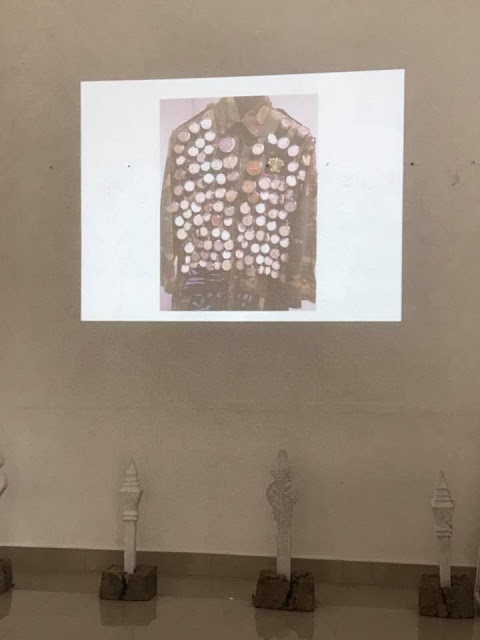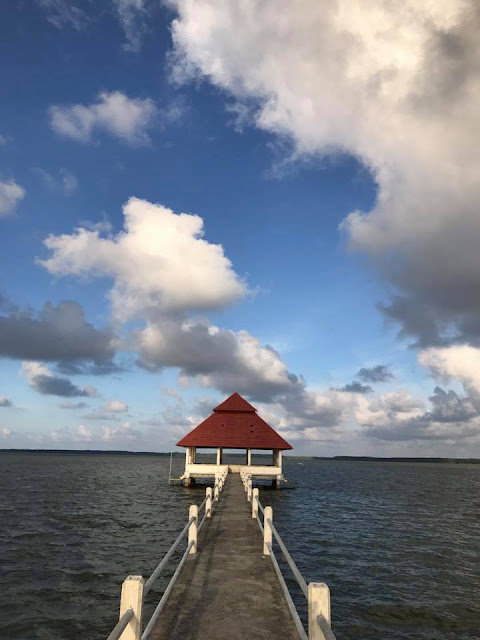จังหวัดยะลา เปิดมหกรรมการแข่งขันนกเขาชวาเสียงอาเซียน ครั้งที่ 32 มีนกเขาชวาเสียงทั้งในประเทศ และต่างประเทศ เข้าร่วมประชันเสียงกว่า 2,000 นก ขณะที่ทหาร ตำรวจ คุมพื้นที่เข้มงวด
เมื่อเวลา 08.20 น วันนี้ (4 มี.ค. 60) ที่ สนามแข่งขันนกเขาชวาเสียง สวนขวัญเมือง เทศบาลนครยะลา อ.เมือง จ.ยะลา นายดลเดช พัฒนรัฐ ผู้ว่าราชการจังหวัดยะลา เป็นประธานชักเสารอกนกปฐมฤกษ์เปิดการแข่งขันนกเขาชวาเสียงอาเซียนครั้งที่ 32 ซึ่งเทศบาลนครยะลาร่วมกับการท่องเที่ยวแห่งประเทศไทย
ศูนย์อำนวยการบริหารจังหวัดชายแดนภาคใต้ จังหวัดยะลา ร่วมกันจัดขึ้น ระหว่างวันที่ 3-5 มีนาคม 2560 เพื่อส่งเสริมการท่องเที่ยว การอนุรักษ์ เผยแพร่วัฒนธรรมประเพณีท้องถิ่น ส่งเสริมอาชีพการเลี้ยงนกเขาชวา และเป็นกิจกรรมที่สร้างรายได้ให้แก่ธุรกิจเกี่ยวกับนก ก่อให้เกิดการสร้างงานสร้างรายได้ให้กับประชาชน และกระตุ้นเศรษฐกิจใน 3 จังหวัดชายแดนภาคใต้ โดยมี นายพงษ์ศักดิ์ ยิ่งชนม์เจริญ นายกเทศมนตรีนครยะลา ส่วนราชการ ประชาชน รวมทั้งชาวชวาวงศ์ ซึ่งเดินทางมาจากจังหวัดต่างๆ เข้าร่วมในพิธีเปิดจำนวนมาก ซึ่งการแข่งขันครั้งนี้มีนกดัง อย่าง “เป๊ปซี่ทอง” จาก อ.จะนะ ราคา 3 ล้านบาท นก “ซุปเปอร์แมน” จาก อ.บันนังสตา ราคา 4 ล้านบาท ลงทำการแข่งขันประเภทเสียงใหญ่ นก “โคล่าทอง” จากปัตตานี ราคา 1 ล้านสามแสนบาท ลงทำการแข่งขันประเภทเสียงกลาง และ นก “ประกายเทพ” ราคา 4 แสนบาท ลงทำการแข่งขันประเภทเสียงเล็ก
ภายในงานนอกจากมีการแข่งขันนกเขาชวาเสียงอาเซียน แล้ว ยังมีกิจกรรมเสริมคือการแข่งขันนก กรงหัวจุก ณ สนามศูนย์เยาวชน เทศบาลนครยะลา การจัดงานเทศกาลอาหารสะอาดรสชาติอร่อย (อาหารจานเด็ด) ครั้งที่ 17 ณ สนามโรงพิธีช้างเผือกเทศบาลนครยะลา
ขณะที่บรรยากาศตั้งแต่ช่วงเช้าเป็นไปอย่างคึกคัก บรรดาชาวชวาวงศ์ ทั้งใน และต่างประเทศ ต่างเดินทางนำนกมาเข้าร่วมการแข่งขัน ทั้งประเภท เสียงใหญ่ เสียงกลาง เสียงเล็ก ดาวรุ่ง จำนวนมาก รวมทั้งนกเขาชวาเสียงที่ได้แชมป์จากปีที่แล้ว ซึ่งปีนี้เทศบาลนครยะลา ได้จัดเตรียมเสารอกนกไว้ จำนวนกว่า 2,900 นก พร้อมจัดกำลังเจ้าหน้าที่ทหาร ตำรวจ อพปร. คอยอำนวยความสะดวก ดูแลรักษาความปลอดภัยให้แก่ประชาชน ทั้งในสถานที่แข่งนก และบริเวณรอบนอก
 | |||||||||||||||
More than 2,000 Javanese doves are expected to join the ASEAN Barred Ground Dove Festival, to be held in the southern border province of Yala from 3 to 5 March 2017.
The barred ground dove is also called the Javanese dove, or the zebra dove. Known for their pleasant cooing calls, the birds are taken to competition fields and have become an economic animal.
The Yala City Municipality, the Yala Provincial Administration, the Tourism Authority of Thailand, and the Southern Border Provinces Administrative Center jointly organize the ASEAN Barred Ground Dove Festival each year at the Khwan Mueang Park in the town of Yala.
Mayor of the Yala City Municipality Pongsak Yingchonchaoen said that many dove raisers from Thailand and other ASEAN countries, such as Indonesia, Malaysia, and Singapore, would bring their doves to compete to make the sweetest and most melodious cooing sounds.
Mr. Pongsak said that Yala is recognized for its standard dove competition field and good management for the festival. Judges for the competition come from various sectors. There will be famous doves from many areas in Thailand to participate in this event, such as those from Chana district in Songkhla, which is well-known for zebra dove farming.
Apart from residents in Yala and Songkhla, those in other southern border provinces – Pattani, Narathiwat, and Satun – have also raised Javanese cooing doves. The ASEAN Barred Ground Dove Festival has been cited as a cultural event to promote relations among the people of different faiths who share a mutual interest in dove raising and other cultural activities.
The festival also aims to boost tourism, conserve local culture and traditions, promote dove farming, and stimulate the economy in the southern border provinces. During the festival, a food fair will also be held. More than 100 food shops have accepted to participate in the food fair this year.
Nu'nah Kittypink.
 | |||
จากวิกิพีเดีย สารานุกรมเสรี
นกเขาชวา
สถานะการอนุรักษ์
ความเสี่ยงต่ำ (IUCN 3.1)
การจำแนกชั้นทางวิทยาศาสตร์
อาณาจักร: Animalia
ไฟลัม: Chordata
ชั้น: Aves
อันดับ: Columbiformes
วงศ์: Columbidae
สกุล: Geopelia
สปีชีส์: G. striata
ชื่อทวินาม
Geopelia striata
(Linnaeus, 1766)
นกเขาชวา หรือ นกเขาเล็ก หรือ นกเขาแขก (อังกฤษ: Zebra dove; ชื่อวิทยาศาสตร์: Geopelia striata-เป็นภาษาละติน แปลว่า "รอยไถ" หรือ"ลาย" มีความหมายว่า "นกเขาที่มีลาย เป็นนกขนาดเล็กชนิดหนึ่ง ในวงศ์นกพิราบและนกเขา (Columbridae)
มีรูปร่างเหมือนกับนกชนิดอื่น ๆ ในวงศ์เดียวกันนี้ทั่วไป มีขนปกคลุมตัวสีน้ำตาลหัวสีเทา หรือมีสีที่หัวเป็นสีน้ำเงิน ด้านข้างคอมีแถบสีดำสลับกับแถบขาวเป็นลายตามขวาง ด้านหลังสีเข้มมีขีดขวาง คล้ายกับลายของม้าลายในต่างประเทศ อันเป็นที่มาของชื่อสามัญในภาษาอังกฤษ ด้านท้องสีจาง ใต้ลำตัวเป็นสีขาวมีขีดขวางเล็ก ขอบท้ายของขนหางสีขาว ขนาดเมื่อโตเต็มที่ไม่เกิน 8-9 นิ้ว
มีพฤติกรรมชอบอาศัยอยู่ตามป่าโปร่ง, ป่าละเมาะ, ชายทุ่งและบริเวณที่ทำการเพาะปลูก ชอบอยู่กันเป็นคู่หรือลำพังเพียงตัวเดียว แต่ไม่ชอบหากินอยู่เป็นฝูงใหญ่ มักร้องบ่อย ๆ ในเวลาเช้าและเวลาเย็น มีถิ่นกระจายพันธุ์ในภาคใต้ตอนล่างของประเทศไทย จนถึงมาเลเซีย, อินโดนีเซีย และฟิลิปปินส์
นกตัวผู้จะมีลักษณะทั่วไปใหญ่กว่าตัวเมียเล็กน้อย หัวใหญ่ค่อนข้างยาว มีสีขาวที่หน้าผากสีขาวมากยาวถึงกลางหัว ขณะที่ตัวเมียหัวกลมเล็กและสีขาวที่ส่วนหัวจะไม่ยาวเท่า และมีรายละเอียดต่างกันเล็กน้อย เช่น หางที่ตัวเมียจะยกแอ่นกว่าตัวผู้ และเกล็ดที่ข้อเท้าจะละเอียดเล็กกว่าตัวผู้
นกเขาชวา เป็นนกที่ไม่เกรงกลัวมนุษย์ ซ้ำยังมีเสียงร้องที่ไพเราะ จึงเป็นที่นิยมอย่างยิ่งในการเลี้ยงเป็นสัตว์เลี้ยงสำหรับฟังเสียง จนกลายเป็นวัฒนธรรมในคาบสมุทรมลายู โดยเชื่อว่ามีมาจากเกาะชวา มีการจัดแข่งขันประกวด การเพาะขยายพันธุ์ ก่อตั้งเป็นชมรมหรือสมาคมต่าง ๆ ซึ่งในตัวที่มีเสียงร้องไพเราะอาจมีราคาสูงถึงหลักล้านบาท ตลอดจนแตกแขนงกลายเป็นอาชีพอื่น ๆ ต่อด้วย เช่น ประดิษฐ์กรงนกขาย
นกเขาชวา ในปัจจุบันกลายเป็นนกประจำถิ่นในพื้นที่ภาคกลางของประเทศไทย จากการที่ถูกนำเข้ามาในฐานสัตว์เลี้ยง และไม่จัดว่าเป็นสัตว์ป่าสงวนหรือสัตว์ป่าคุ้มครองแต่ประการใด
Thank you Winai Madaree




































































































